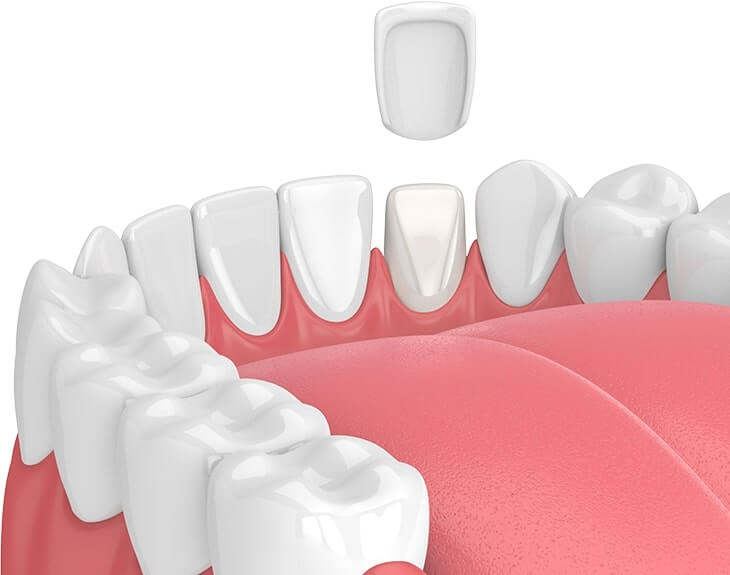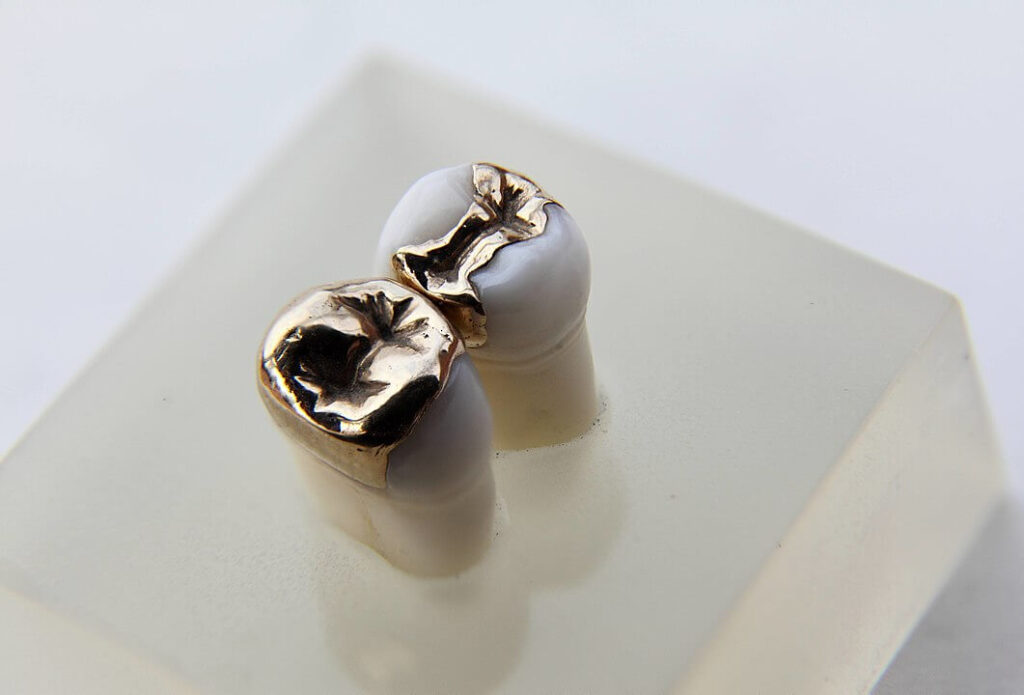Getting the “perfect” smile may be important to some people, but veneers offer a custom solution for those that are unhappy with the look of their original teeth. The patient may have had a great smile once but tooth decay, trauma, or genetics could have affected their teeth negatively, veneers are a great fairly non-intrusive way to completely change your smile.
What Are Dental Veneers?
How do dental veneers look?
If the tooth is missing or badly fractured, veneers may not be effective, in which case, the dentist may recommend a dental crown or bridge as a restorative measure.

Inlays & Onlays
- Porcelain
- Resin
- Gold

Different Types Of Veneers
Porcelain Veneers
Porcelain is one of the best materials to use for veneers as it matches the look and feels of your teeth very closely, it’s the least harmful, strongest, and longest-lasting material to use. Porcelain is an extremely “biocompatible” material. This means that you are extremely unlikely to be allergic to it, or have it affect your oral health significantly at all.
Pros
- Blend in with your natural tooth color.
- Stain-resistant.
- Very strong and durable.
- Lower chance of fracture, chipping, or breakage.
- Smooth, tooth-like texture.
- Do not harm your gums or surrounding teeth.
- Little plaque build-up with proper dental care.
- Durable, typically 8 to 15 years.
Cons
- Expensive
- Lengthy procedure
Porcelain veneers are the best-looking, but they are the most expensive solution. It is advisable to discuss your coverage with your insurance provider before looking into this.
Composite Veneers
Composite veneers are named as such because they are made up of a number of different materials. Composite veneers are composed of inorganic and organic materials. The natural (organic) materials include the initiator, resin, and coupling agent. The inorganic element of composite veneers usually is the filler. A tooth-colored material is used to bond the composite veneers into place. These veneers are strong and durable, but they are not as strong as porcelain. They also may be prone to staining if not properly cared for. Having a veneer does not mean you can forget about a good oral care routine.
Pros
- Relatively strong and durable
- Less invasive procedure (less enamel removal)
- They look natural but can stain over time
- Low chance of harming your gum tissue
- Easily repaired if chipped or broken
- Only requires a single visit and no temporary restorations
- Last between 5 to 7 years
Cons
- Weaker and more prone to stains over time than porcelain veneers
- Do not last as long as porcelain veneers
Lumineers
Pros
- They are reversible
- Require less tooth preparation before placement
Cons
- Shorter lifespan than traditional veneers
- Less natural-looking than veneers
- More prone to fracture and damage
Removable (Temporary) Veneers
Instant Veneers
Snap-On Veneers
How Much Do Veneers Cost?
- The material used
- The location of the placement
- How many you are getting
The cost of veneers can vary between a few hundred, and a few thousand dollars per tooth.
